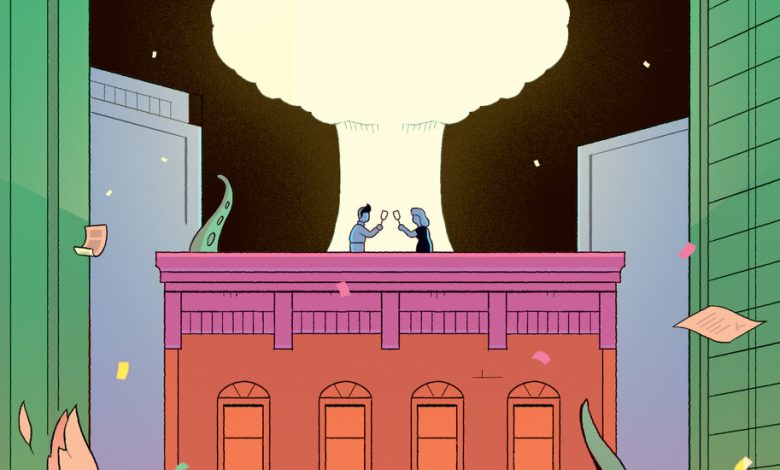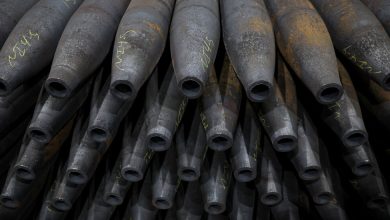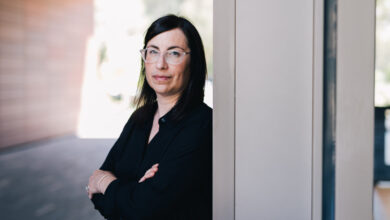Was the World Collapsing? Or Were You Just Freaking Out?

What should we make of this year in America? There’s an argument that this is the end, or the beginning of the end, that the infrastructure of our democracy is crumbling, and that the jittery quality in the economy portends collapse and that the nuclear risk in Russia’s war in Ukraine could combust into something much bigger. There is, then, the counterargument that even with all these strains, we’re actually witnessing the system hold, that democracy prevails, that the danger is fading.
Those arguments can register as hysterical or dismissive or out of touch, but they can also be considered in the most openhearted, late-night kind of way. Maybe we really are on the verge of something even worse, as in large stretches of the 20th century, and this is how people felt in previous eras that you read about. Is the world as we knew it ending? Would you even know, until it was too late, until it was actually over?
In 2022, you could find the swings in discourse between apocalypse and dismissal, panic and caution, in politics, in the media, on Twitter and Instagram, over text, in person, within and between ideological factions, about war in Europe, about the state of American democracy, about illiberalism and the prospective retreat from globalism, about violence, about Covid, about artificial intelligence, about inflation and energy prices and crypto collapse contagion. There are deep versions of this debate, and reductive ones you catch a glimpse of in Instagram comments or in an op-ed that just gets it all wrong. This can even be a debate you have with yourself.
You probably know about the apocalyptic possibilities for American democracy. Fundamentally, this country doesn’t work if the peaceful transfer of power does not work. This country doesn’t work, and didn’t work in living memory, if people can’t vote. And there might be a threshold at which it doesn’t work if enough people don’t trust election results. Those existential questions have now been channeled into concrete problems: In 2022, people called up election offices and left death threats; people in tactical gear staked out voter drop boxes; election offices installed bulletproof glass. Republicans fielded candidates in Arizona and Pennsylvania who ran on the premise that elections in this country were a lie. Millions watched the Jan. 6 hearings that delved into how chaotic and fragile the final days of the Trump White House really were.
Then, in this fragile landscape of trust, there were the courts. In the summer, the Supreme Court fully overturned Roe v. Wade, a decision long expected, but one that still seemed to shock even the people who wanted it — even after the surreal publication of a drafted opinion in the spring. The fact that it really did happen — that suddenly a woman had to drive into another state to get an abortion so that she wouldn’t potentially die from complications — not only carried that kind of real-life consequence in a thousand private moments of people’s lives, but also opened up a world of other possibilities about what could happen. Maybe the court would roll back marriage equality. Or sign off on “independent state legislature” theory, an obscure theory adopted by a group of right-wingers that would grant expanded powers to state legislatures in carrying out elections and risk destabilizing the entire system.
Accompanying all these events was a disorienting, high-stakes discourse about how to talk about conspiracy theories and antidemocratic threats, and about how much to do so. We know that what people say — what we say — on social platforms, and certainly in the media, shapes the way people perceive politics, but in a way that can be hard to measure — an awareness that can convert every piece or post into an opportunity or mistake. Writers argued that excessively focusing on democracy might alienate, rather than persuade, voters, or even corrupt institutions by intertwining constitutional and partisan concerns.
Then there was the world beyond discourse, where no one could control much of anything beyond one man. For months, for years, since the 2014 annexation of Crimea and the West’s tepid response to it, people had warned that Vladimir Putin would eventually launch a full-scale invasion of Ukraine — then it happened. Not many people in Russia or anywhere else seemed to want this beyond Mr. Putin, but that did nothing to prevent Ukraine from becoming the kind of place where a boy has to figure out for himself that troops shot his mother and stepfather because nobody knows how to tell him, where people had to drink the water from radiators to stay alive, where reflecting on brutal deaths in one city, someone can find themselves grimly observing, “In theory, international bodies have the authority to prosecute war crimes wherever and whenever they occur.”
The quick transition of the invasion from something expected but hypothetical into something very real, with needless deaths and millions of Ukrainians and Russians leaving their homes maybe forever, opened up other dark possibilities. It seemed existential, first for Ukraine, then for the rest of Eastern Europe. The NATO alliance, if things escalated, could fracture. The possibility of China invading Taiwan — and the possibility of full-scale global war — suddenly seemed easier to imagine, and even expect. Nuclear weapons became something people had to think about, seriously. And more immediately, disruptions in natural gas, battery and grain production and distribution seemed like they would crash countries far and wide.
The debate about whether post-pandemic inflation might be transitory gave way to whether this might be the 1970s with the pain of stagflation and energy shortages; then whether the crypto collapse might have 2000s housing market flavors; what popping energy prices in Europe might do to politics there and beyond; and worst, that grain prices might cause a wave of starvation around the world. On the Bloomberg financial podcast “Odd Lots,” the hosts frequently observe there’s been a “perfect storm” of crisis conditions: in shipping logistics, coffee prices, copper production shortages, the challenges of starting to pump more oil, seemingly everything has broken down or gone awry a bit all at the same time. Is this just a heightened period of unusual events, or a lull before interlocking pieces collapse?
And this leaves out the deeper worries people have, which also contribute to a sense of societal disintegration, about teenage depression and anxiety, declines in reading and math, the omnipresence of fentanyl, the resurgence of antisemitism and anti-L.G.B.T.Q. violence. The police took an hour to intervene while a broken young man shot children. Young people shot grocery shoppers because they were Black, patrons at a gay and trans nightclub, college football players after a field trip to see a play. Lives just ended midway through something normal, and few things make people feel more like the world is ending than that.
There’s a reason so many people worry about a broader societal loneliness that’s hard to define and harder to break up. There’s a reason so many people describe walking in a fog. “For now, we are alive at the end of the world,” the poet Saeed Jones wrote in his latest collection, “shellshocked by headlines and alarm clocks.”
Even within all this pain and dark possibility, some news has defied expectations. Russia hasn’t rolled through Ukraine; the United States and Europe have held together; people celebrate in darkened cities from which Russian troops retreat. Many of the biggest names in American election conspiracies — and especially the people who wanted to control the levers of election bureaucracy — lost their races in the states that matter most to the transfer of presidential power. The collapse of major crypto exchanges and coins has not, so far, spread throughout the financial system. The Supreme Court sounded skeptical this month about independent state legislature theory, though we won’t know really until next year. There was not widespread violence or unrest on Election Day or in response to results.
Maybe humans were underestimated against artificial intelligence, as my colleague Farhad Manjoo argued; there was a breakthrough in nuclear fusion, even if building on it might be really complicated; people are likely to soon be receiving a malaria vaccine that could transform the way the disease spreads. Some of the most dire climate change predictions might prove too dire. “The window of possible climate futures is narrowing,” my colleague David Wallace-Wells wrote this year, “and as a result, we are getting a clearer sense of what’s to come: a new world, full of disruption but also billions of people, well past climate normal and yet mercifully short of true climate apocalypse.”
He argues that in part, some of the improved outcomes derive from a mobilization in response to deep fears. This is tied up in the mysterious fluidity between ominous warnings and positive outcomes, that fear can ameliorate the reason for fear. This might be what have kept the really hard-core conspiracy theorists out of office this fall — that swing voters heard a dark view of what could happen and acted. Or maybe they just want more stability; maybe many people do.
This is, theoretically, why people debate the nature of our problems and their severity on Twitter and in places like The New York Times: the response. The private and public scientific debate about, for instance, the severity of a new variant of a virus has the potential to guide the governmental and societal response.
But that can’t be all of it, not really, because most conversations like this are not held with the expectation that Joe Biden is listening.
Seeing talk about how the world is ending, or that you should calm down, can be absolutely infuriating if you’re not in the mood for it: the person who seems too alarmist, whose panic grates on your nerves or seeps into your psyche, attaching itself to all of your smaller worries; that kind of argument where democracy is already lost, and anything you throw out to complicate the picture, they shoot down without exception. Or the person who’s too dismissive, who cannot recognize people’s genuine concern, who ultimately fails to recognize, on some level, you — who does not see, or refuses to see, the crisis that is here, now.
Worrying about the end of everything, dismissing that, debating it, putting a stake in what’s going to happen next: This might be a way to exert control over the uncontrollable, to assert either our own agency or create distance between ourselves and the unexpected. Things just happen now, beyond belief and rationality and sometimes words. And there’s something almost hopeful — the validation that we’re alive and that we can shape events — in trying to make sense of it all.
Katherine Miller is a staff writer and editor in Opinion.
The Times is committed to publishing a diversity of letters to the editor. We’d like to hear what you think about this or any of our articles. Here are some tips. And here’s our email: [email protected].
Follow The New York Times Opinion section on Facebook, Twitter (@NYTopinion) and Instagram.





